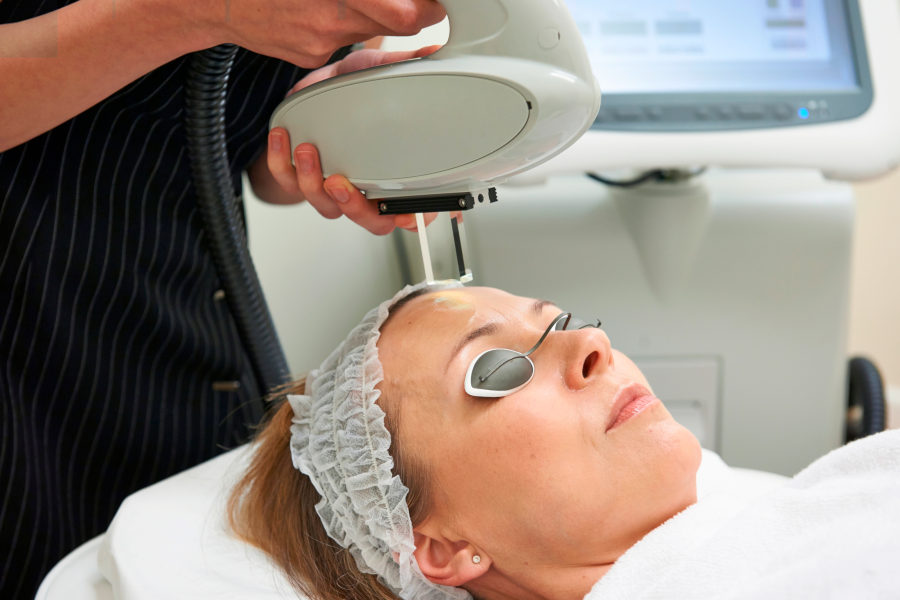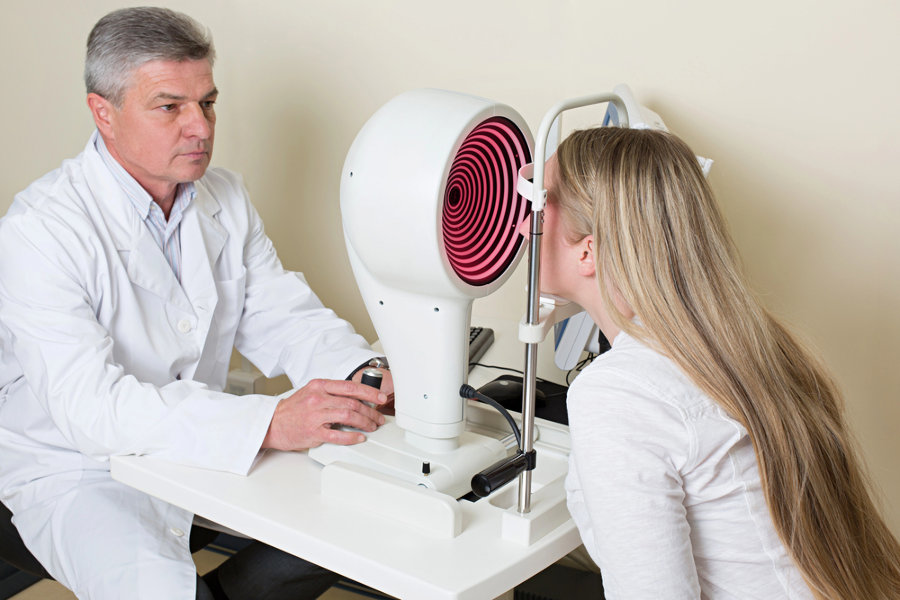From Home Remedies to Intense Pulsed Light for Dry Eyes
Are dry, irritated eyes affecting your ability to enjoy daily activities? Could the solution to your persistent dry eyes be more advanced than just applying eye drops?
Artificial tears only provide temporary relief and don’t address the root cause of chronic dry eyes. And although they can help, home remedies alone often can’t tackle meibomian gland dysfunction, the leading cause of dry eyes.
It might be time to consider supplementing your current eye care routine with a new approach that has proven to be effective for many of our patients.
Intense Pulsed Light (IPL) therapy for dry eyes is a non-invasive treatment that uses controlled light pulses to reduce inflammation, unblock meibomian glands, and improve tear film quality, providing relief for conditions like meibomian gland dysfunction and chronic dry eye syndrome.
I’m Martin Robinson, the owner and principal optometrist at Martin’s Eyecare in Glenorchy, Tasmania. With years of experience diagnosing and treating dry eye syndrome, I understand how frustrating and disruptive it can be to your daily life. If you’ve tried artificial tears or home remedies without success, I’m here to provide clear, effective solutions that are tailored to your needs.
To find out if advanced IPL therapy is the solution you’ve been searching for, keep reading.
KEY TAKEAWAYS
- Intense Pulsed Light (IPL) therapy offers an innovative solution for chronic dry eyes by targeting root causes like meibomian gland dysfunction.
- Combining home remedies with advanced treatments can provide long-lasting relief and improve overall eye health.
- Taking early action to address dry eye symptoms prevents complications and enhances your quality of life.

What is Dry Eye Syndrome?
What happens when your eyes fail to stay hydrated as they should? Dry eye syndrome develops when the eyes cannot produce enough tears or when the tear film—the thin layer covering the eye’s surface—loses its proper balance of water, oil, and mucus. This tear film is crucial for protecting and lubricating the eyes, clearing away debris, and maintaining sharp vision. A compromised tear film often leads to symptoms such as irritation, redness, and a gritty sensation. Many people also experience blurred vision or sensitivity to light, which makes everyday tasks like reading or using a computer uncomfortable and difficult.
One of the primary causes of this condition is meibomian gland dysfunction (MGD). The meibomian glands, located along the edges of the eyelids, are responsible for producing oils that prevent tears from evaporating too quickly. Blockage or inflammation in these glands destabilises the tear film and leads to dryness. Environmental and lifestyle factors such as excessive digital screen time, air conditioning, and exposure to dry climates can intensify the problem. Age-related changes, hormonal fluctuations, and systemic conditions like diabetes or autoimmune diseases also contribute to dry eye syndrome.
Untreated dry eyes can result in more severe complications. Persistent dryness may damage the corneal surface, increasing the risk of infections and, in extreme cases, vision loss.
The discomfort associated with dry eyes interferes with daily life, making activities such as driving, working, or leisure pursuits more challenging. It can also be a restriction for those people who would prefer to wear contact lenses. Early intervention is essential to prevent further damage and to restore eye comfort.
Exploring Home Remedies for Dry Eyes
Can simple remedies at home bring relief to dry eyes? Often, the first line of defence involves making small but effective adjustments to your daily routine. Staying hydrated and eating a balanced diet, particularly one rich in omega-3 fatty acids from sources cold-water fatty fish or flaxseed, can significantly improve tear film quality. Adopting a Mediterranean diet, boosted by supplements, is believed to be beneficial for overall eye health.
At-home treatments like warm compresses and heat packs are another popular choice. Safely applying gentle heat to the eyelids can help stimulate the flow of oils from the meibomian glands, improving lubrication and comfort. Regular eyelid hygiene routines, including cleansing the lids to remove bacteria and reduce inflammation, can further ease symptoms.
However, it’s important to understand the limitations of home remedies. While these measures may provide temporary relief, they don’t always address the root causes of dry eye syndrome, particularly in cases involving gland dysfunction or inflammation. Persistent or worsening symptoms often signal the need for professional care to explore more advanced solutions.
Proactive steps at home can make a noticeable difference, but they are best viewed as part of a broader strategy for managing dry eyes effectively.
Intense Pulsed Light (IPL) for Dry Eyes
For moderate to severe dry eye sufferers who are struggling to find relief, it might be time to consider an innovative therapy which is available at Martin’s Eyecare.
Intense Pulsed Light (IPL) therapy is an advanced, proven treatment designed to address the underlying causes of dry eye syndrome. This technology uses controlled bursts of light to target inflammation and stimulate the meibomian glands, which play a crucial role in maintaining a healthy tear film. The light penetrates the skin, addressing the blood vessels that contribute to inflammation, while also improving the function of the oil glands in the eyelids. This process, known as photo bio-modulation, helps reduce evaporative tear loss by enhancing meibomian gland performance.
IPL treatment is also beneficial for individuals with aqueous-deficient dry eye syndrome, where tear volume is insufficient. While IPL does not directly increase tear production, its anti-inflammatory effect creates a healthier environment for proper tear production.
Additionally, IPL therapy is useful for addressing conditions often linked to dry eyes. It can effectively treat facial rosacea and telangiectasia, which exacerbate inflammation and gland dysfunction. Chalazia and styes, which develop from clogged or infected oil glands, also respond well to light treatment.
Intense Pulsed Light sessions offer a comprehensive approach, addressing a range of issues that contribute to dry eye symptoms, making it an invaluable tool in modern eye care. The effectiveness of the therapy has been supported by several peer reviewed studies.
| Study | Number of Patients | What Was Done? | Key Improvements | Source |
|---|---|---|---|---|
| Demolin et al., 2023 | 759 patients across 11 studies | IPL therapy sessions | Improved tear stability (better tear break-up times). | https://www.mdpi.com/2077-0383/12/8/3039 |
| Qin et al., 2023 | 49 patients with severe dry eye | 3 IPL treatments over 6 weeks | Reduced eye dryness symptoms by half, stronger tear film, and better oil layer in tears. | https://link.springer.com/article/10.1007/s40123-023-00649-5 |
| Jiang et al., 2022 | 132 patients with dry eye linked to oil gland issues | 2 IPL sessions, 1 week apart | Better tear quality, reduced symptoms of dryness, and healthier oil glands. | https://link.springer.com/article/10.1007/s40123-022-00556-1 |
| Pac et al., 2024 | 110 patients with gland-related dry eye | Multiple IPL treatments over a year | Reduced inflammation, stronger tear film, and better overall eye comfort. | https://link.springer.com/article/10.1007/s40123-024-01017-7 |
| Trone et al., 2022 | 45 patients with mild to moderate dry eye | 3 IPL sessions over 45 days | Longer-lasting tear film, reduced redness, and more comfort even 6 months later. | https://bmcophthalmol.biomedcentral.com/articles/10.1186/s12886-022-02531-7 |

The Intense Pulsed Light Treatment Process
What can you expect during a visit to Martin’s Eyecare for IPL treatment? The process is straightforward and minimally invasive. Before starting the session, we ensure your face is clean and free from sunscreen or makeup to maximise the treatment’s effectiveness. We then apply a cooling gel to the treatment area, along with protective stickers or shields to safeguard your eyes during the procedure.
The treatment itself involves a series of light pulses delivered in a specific pattern around the eyes. These pulses penetrate the skin to target underlying inflammation and stimulate the meibomian glands. The process is quick, usually completed within 20 to 30 minutes, and is generally well-tolerated by most patients.
A typical treatment plan includes four sessions spaced two to five weeks apart to achieve the best results. After the initial sessions, we usually recommend maintenance visits to sustain the benefits over time. While some patients notice an improvement after the first session, the cumulative effect of repeated treatments ensures more lasting relief.
This efficient and effective treatment process is a compelling choice for those struggling with moderate to severe dry eye symptoms, particularly when other therapies have fallen short.
To see an IPL session in action, watch the following video by Dr. Joseph Allen from the Doctor Eye Health YouTube Channel.
Combining IPL with Other Strategies
Can IPL therapy work even better when combined with other treatments? Absolutely. While IPL is highly effective at reducing inflammation and improving the function of meibomian glands, it’s often most successful when used alongside complementary therapies. For example, manual meibomian gland expression can significantly enhance the results of IPL. By physically clearing gland blockages after an IPL session, we can help restore oil flow, ensuring the glands are functioning at their best.
Continuing the use of artificial tears between IPL treatments can also maintain moisture levels and provide immediate relief from dryness.
Dietary changes, such as incorporating omega-3 fatty acids, support tear quality and improve the health of the tear film over time. Simple adjustments can amplify the benefits of IPL and make a noticeable difference in daily comfort.
Good blinking habits and maintaining proper eyelid hygiene are equally important. Blink exercises can help prevent stagnation in the meibomian glands, while regular cleansing of the eyelid margins keeps bacteria and inflammation at bay.
By integrating IPL with other habits and treatments, we can address dry eye syndrome from multiple angles, delivering more effective and lasting results. Each treatment complements the other, providing a comprehensive path to relief.
Who is Suited for IPL Dry Eye Therapy?
Who benefits most from IPL therapy for dry eyes? This treatment is particularly well-suited for individuals with moderate to severe dry eye syndrome who haven’t found lasting relief from traditional methods like artificial tears or warm compresses.
Patients with meibomian gland dysfunction (MGD), a common cause of dry eye, often experience significant improvements after undergoing IPL.
IPL can be especially beneficial for patients who struggle with applying eye drops or maintaining rigorous at-home routines. By targeting the root causes of dry eye, it offers relief that reduces the need for frequent, short-term treatments. It’s an excellent option for those seeking a low-invasive, long-term solution to manage their symptoms.
Additionally, IPL may appeal to those managing conditions like rosacea, telangiectasia, or chalazia, which are often associated with inflammation that exacerbates dry eye symptoms.
However, IPL isn’t ideal for everyone. Patients with contraindications, such as darker skin tones, photosensitising medications, or pregnancy, may need to explore alternative treatments.
In some cases, advanced therapies like scleral lenses may provide better outcomes for individuals with specific underlying conditions like neurotrophic keratitis or neuropathic pain.
Financial considerations can also be a factor, as IPL is currently not covered by insurance.
For the right candidates, IPL offers a targeted, efficient, and transformative approach to managing dry eyes, particularly when other treatments haven’t delivered the relief they need.
CONCLUSION
Intense Pulsed Light (IPL) therapy stands out as a game-changing option for addressing dry eye syndrome. Its ability to reduce inflammation, restore tear film balance, and alleviate discomfort makes it an invaluable tool in modern optometry. While home remedies like heat packs or artificial tears can ease symptoms temporarily, they often fail to tackle the underlying causes. IPL’s focus on resolving root issues makes it a superior choice for many patients.
Through a series of quick, minimally invasive sessions, IPL delivers results that extend beyond symptom management. The process is especially effective for meibomian gland dysfunction, but it also benefits individuals with aqueous-deficient dry eyes and associated conditions like rosacea, chalazia, or styes. Combining IPL with complementary clinical therapies further enhances its effectiveness, providing a comprehensive solution to dry eye syndrome.
Don’t let dry eyes disrupt your life any longer — book an appointment today and take the first step toward lasting relief.
Come and see us at our Glenorchy optometry practice, just a 10 minute drive from the centre of Hobart.
Book your eye care appointment with us today at Martin’s Eyecare.
Call (03) 6272 8423 or use the “Book Appointment” button below.
– Martin Robinson, Optometrist & Owner.
